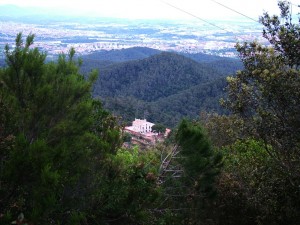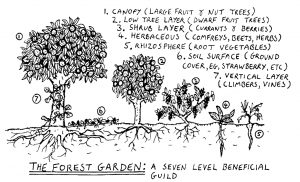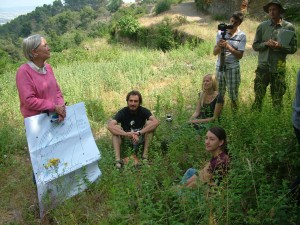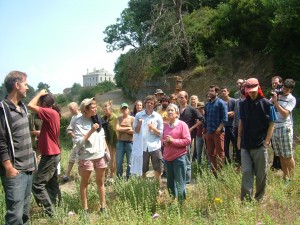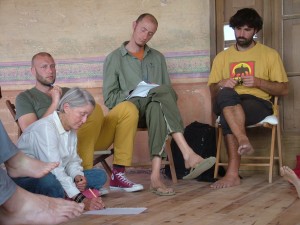Today we talked about the Zone 4. it’s the zone where we put the restorative forest. The products of this forest can be summarized with the seven F’s: food, fuel, fodder, fruits, flowers, fibers, and fertilizers.
In permaculture, 40% of the site should be under forest cover, either productive forest, or untouched forest (zone 5). Each tree’s harvested product should last as long as it took to grow, which means that we don’t want to burn a 200 old oak, but rather use it for furniture. For firewood we can use trees that have the ability to coppice (resprout), like Casuarina, Eucalyptus, willow,…
A slope greater than 20 degree should be forested, and if we have a good access we can put a restorative forest there. If the slope is greater than 45 degrees, we should have an untouched forest because it’s too steep to work in.
A food forest has 7 layers:
- canopy trees
- fruit trees
- bushes
- herbs
- ground cover
- roots
- vines
also in the tropics we have an extra palm layer.
When we start with a new forest, to accelerate succession we should plant N-fixing trees and pioneers. Fencing the area, or at least the best trees, is important in the early stage, otherwise wild animals may damage it. If the soil is bare, cover it with living mulch. Once there is enough shade, we can add few animals.
We got useful information on how to start designing.
First, we start we zone 5: in all boundaries, along all rivers, in tops of mountain, on slope greater than 45 degrees and along roads.
Then we continue with the other zones for example in zone 4 on slopes greater than 20 degrees, then zones 1 and 2 and finally at the end we do zone 3, which will get greater yields and stability of production (farming in clearings)
Finally we came to zone 5, which has several important functions:
it’s a model we can observe and imitate
- climate moderation
- erosion control
- biodiversity
- slow long release of water
- wildlife corridor: allow genetic evolution/adaptation in times of climate change. Also it’s a species refuge.
When we want to start a forest on a site invaded by weeds, we need to take action, especially minimum disturbance techniques:
- start on the outside, remove weeds and replace them immediately with good species.
- Throw seed pellets from top
- use branch cover: branches with seeds are placed on ground. The seeds will eventually germinate
- hydromulch
Finally we had a client interview with Nuria to know about what they want from the site.

